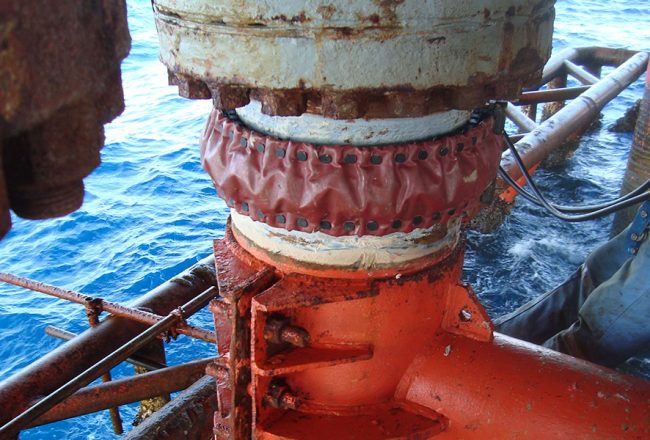Offshore Production
Produce Confidently While Managing Erosion Risk
Sand hold-up in produced gas poses an integrity risk through erosion. The rate of metal loss depends on gas velocity, level of sand hold-up and particle size: if hold-up and particle size vary unpredictably the rate of erosion is unpredictable. Erosion is greatest where gas velocity is highest or flow direction changes – directly after the choke, on the outside radius of bends, or just downstream of bends or blind Tees.
For a given level of sand hold-up, erosion rates increase dramatically as production rates are increased. Platform operators may to have to limit production rates to minimise integrity risk. But monitoring is a more cost-effective alternative – by tracking the condition of the complete pipe continuously, it gives warning of any increase in erosion rate in good time to take corrective action, and thus the confidence to produce at higher flow rates.


Avoid Splash Zone Surprises
The splash zone – 3-4m above high water mark to 1-2m below low water mark – is exposed to aerated sea water, UV radiation and potential mechanical damage to protective coatings from wave action. Cathodic protection is ineffective; protection against external corrosion relies on a protective coating. Coating failure exposes the riser to aggressive corrosion – and 50% of offshore facilities are operating beyond design life.
Permanently installed monitoring systems
- avoid the need for travel to the platform, with all its cost and hazards, for inspection of the splash-zone
- reliably identifies external corrosion under the protective coating and tracks its progress, enabling managed intervention with confidence.
Guided Ultrasonics’ solution for offshore environments
Guided Ultrasonics systems are ideally suited to platforms
- non-intrusive sensors – IP67 rated; proven in years of offshore service
- data retrieval with cabling to a convenient location for scheduled collections, or autonomous wireless data collection
- data analysis and visualisation at your desk onshore – no offshore visits.
See our Caisson Case Study for an example.

